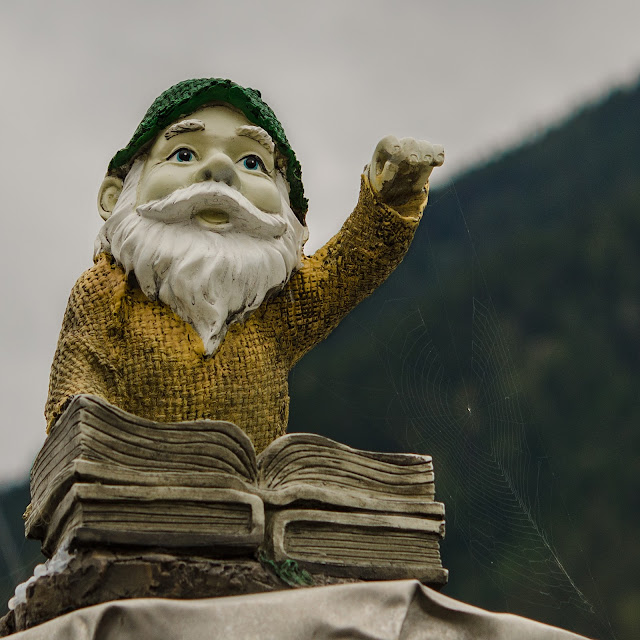Urbanization is hard on rolling stones. Or flippable rocks. I set out full of optimism to turn over a few familiar rocks in my neighbourhood. But they're gone, or locked away: the builders and developers and pavers have moved in. The vacant lot across the street, which last year was a square block of rocks and weeds, and a killdeer nest, and another block of incipient forest full of twitterings and rustlings, has been bulldozed and fenced. The alleyway behind the church, once the passageway to gently mouldering farm buildings, now leads to more fences and developers' signs. Our street has been widened and sidewalked; the ditch where I used to watch for skunks is no more. Even Cougar Creek Park has been "cleaned up" and hemmed in with housing estates. Our road in has been re-routed and lined with "No Parking" signs.
On the far side of a schoolyard, past the newly-grassed lawns and playing fields, past the neatly-trimmed treed area, back against the fence where nobody goes, I finally found a half-dozen forgotten rocks. And a few small beasties still sheltered there.
The
beetle was under the third rock I turned. A small spider raced over my hand as I flipped the fourth, and disappeared under the grass. And then I hit paydirt under a small rock, almost too small to be worth flipping, I thought.
 |
| Very small, very pale, orange and tan ants. This is on the underside of the stone itself. The ant at the top right seems to be toting a shred of a pupal cocoon. |
 |
| Here, they're wrestling a cocooned pupa into a crack in the stone. |
 |
| A cluster of cocoons on the ground underneath the stone. No ants are with this bunch, but there's a pretty green springtail at the top. |
I wonder about ants. When they're stressed, they race around frantically, pulling and dragging their babies, (eggs, larvae, and/or pupas) trying to get them under cover. But it's almost as if they were moving randomly; an ant will drag a cocoon one way, forget about it, and go off in the opposite direction, talk to another ant, and race away to pull at different cocoon, going the wrong way half the time. And yet somehow, the cocoons manage to get hidden away; A
Random Walk with a twist in it somewhere.
I replaced the stone before the ants finished dragging away their cocoons, so they wouldn't have all the work of hauling them back out again.
The next rock, a bigger one, hid one racing beetle, and one big spider who sat there, trying to be invisible.
 |
| I don't think I've seen this pattern before. |
I got too close, and she was gone in a flash; I didn't even see her run.
















































